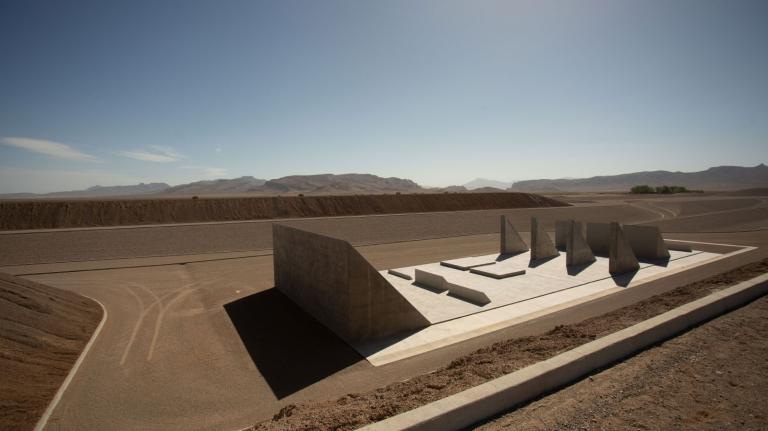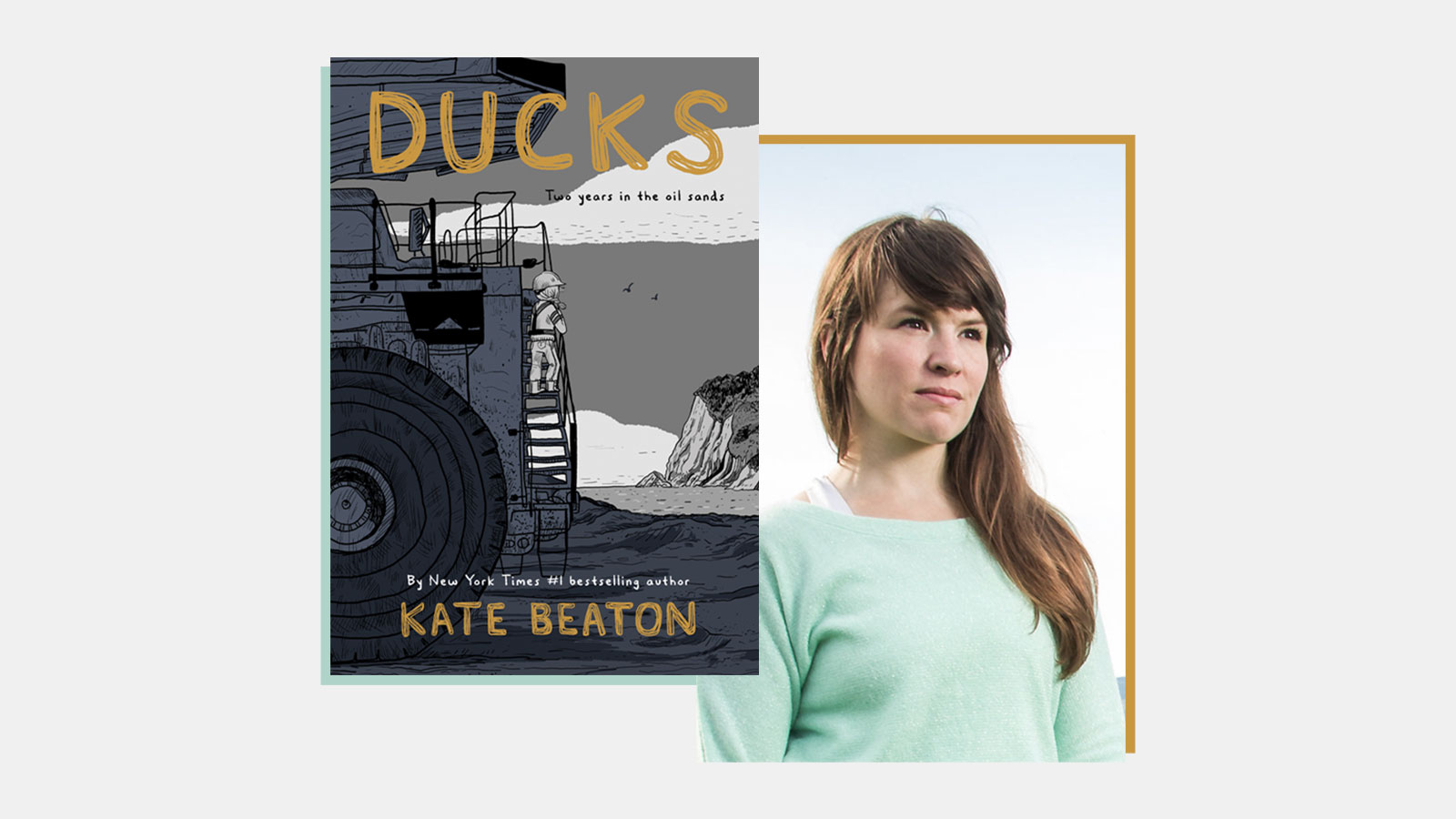In the spring of 2008, an estimated 1,600 migratory ducks landed in the wrong place: a pond of toxic sludge in Fort McMurray, Alberta, in the heart of Canada’s oil sands. The birds, slick with oil, struggled to get out of the bitumen-covered water; wildlife officials shot the ones that didn’t die to put them out of their misery. The ducks’ deaths brought international attention to Northern Alberta. Syncrude, the company that filled the tailings pond with the byproducts of oil production, was eventually fined nearly $3 million for negligence.
But at the same time, there were other problems in the oil sands — human ones — that escaped media attention, according to Kate Beaton, the author of the upcoming graphic novel Ducks: Two Years in the Oil Sands. After graduating from university in 2005, Beaton left her home in Cape Breton, an island off the east coast of Canada, to try to pay off a mountain of student loans by working in Fort McMurray. A white lie got her a job in the “tool crib” at the Syncrude Base Mine, where she handed wrenches and hard hats to workers. Around the time the ill-fated ducks landed in the toxic pond, Beaton was working in an office for Shell in the Albian Sands, using the office copier on her lunch break to scan the cartoons that would launch her future career.
Today, Beaton is best-known for her sharp historical and literary satire in the comic book Hark! A Vagrant, a New York Times bestseller. Though Ducks maintains the same knack for humor, it is darker, recounting Beaton’s two years in Fort McMurray in impressive detail. Ducks has already drawn comparisons to classic graphic novels such as Alison Bechdel’s Fun Home and Marjane Satrapi’s Persepolis. It offers an empathetic picture of her coworkers while also portraying the harsh realities of life in the oil sands: isolation, environmental destruction, and for Beaton personally, an endless stream of sexist comments.
In an interview with Grist, Beaton explained why she thought a new story needed to be told about Alberta’s most controversial industry. This interview has been condensed and edited for clarity.
Q. You’ve written that people often characterize the Alberta oil sands as either “entirely good or entirely bad — the jobs and profits vs. the climate-rattling destruction.” How did you push back against that dichotomy in your book?
A. The images that we often see are of the giant machines. Rarely do you see the workers in any capacity but in their role as the operator of a machine, or behind the wheel of a pickup truck. I am from Nova Scotia, a place that exports migrant workers to Alberta. There isn’t a family around here that isn’t affected by a loss of a loved one to the oil sands. And when I see news about the oil sands, very rarely do I see the humanity in the place. It’s about politics or environmental issues, which are important, but for me, it’s a personal story.
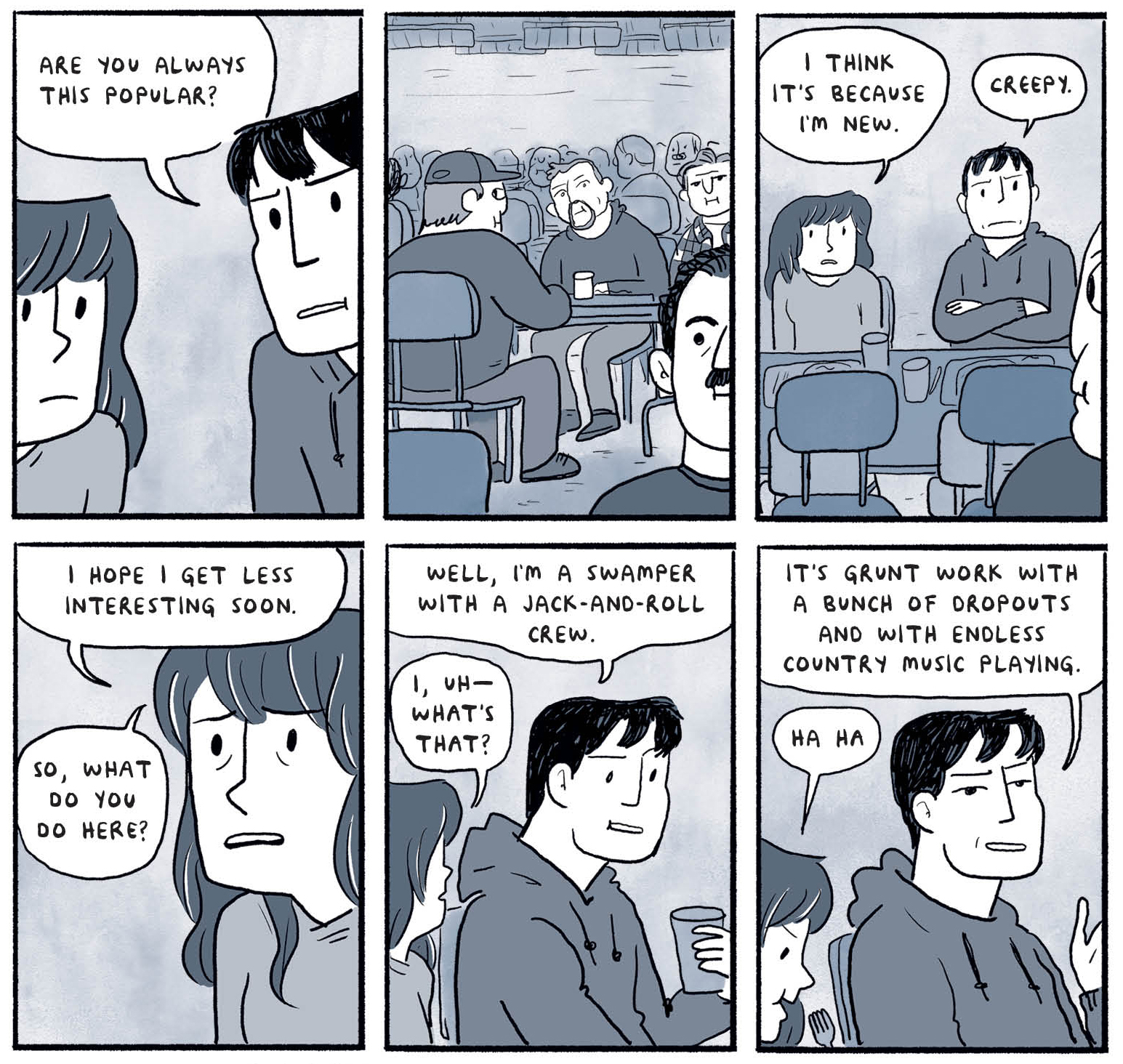
Q. Your book lets readers draw connections for themselves about these bigger themes, but do you see a link between how these oil camps exploit both people and the environment?
A. Well, when you go out there, you lose your sense of yourself very quickly, because you are so isolated, you’re far from home, and you’re resocialized into an environment that is really unnatural. In my camp dorm, there were 48 rooms, and two of us were women. If you are a man, you are not expected to do anything except work and perform work-type masculinity — we’ve all seen the “hurt feelings report.” It’s a joke about somebody complaining about how their feelings were hurt. And that’s the type of stuff that you see all the time. So, mental health suffers under the conditions of hiding away your pain. And the massive gender imbalance has an obvious effect on the lives of women.
And so how that translates into the environment seems like an easy parallel to me. People’s lives are not being cared for. If there was somebody having a mental health crisis or a drug crisis, they would just be gone — either they would leave work or they would be fired. The company would not be responsible for them as soon as they left the site. And we would never see them again.
Q. What did workers think about environmentalists?
A. When Greenpeace showed up and made a demonstration after the duck deaths, they were decidedly not on the side of the workers at all. Their point was to make a big splash, to get on front page news. As somebody pointed out to me in the book, Greenpeace left a mess for people to clean up, and put workers in danger to clean up afterwards.
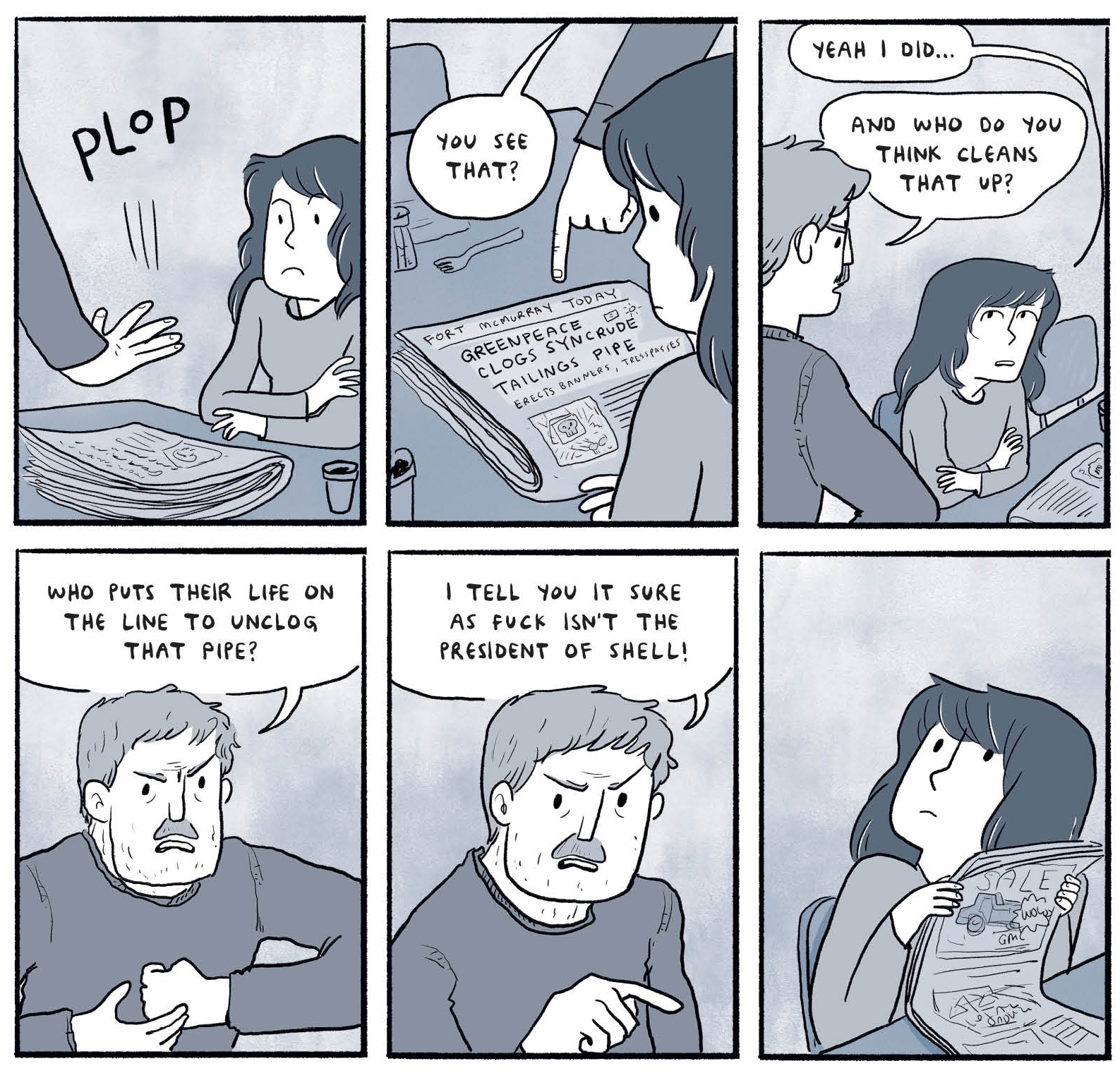
Q. Why did you choose Ducks as the title?
A. When the ducks hit the tailings pond, you could hear the necks snapping as the world turned to look at what was going on in Fort McMurray for the first time, because it made headlines all over the world. It was this mass casualty of wildlife and it looked really bad.
It was a tragedy, and it shouldn’t have happened, but the ducks made headlines, and meanwhile, 2008 was one of the deadliest years for crashes on Highway 63, connecting Fort McMurray to Edmonton, which they called the Highway of Death. I saw a few of those deadly crashes. And there were a few workplace deaths when I was there — the companies always downplayed how dangerous the actual sites were. And the Indigenous communities around the oil sands reported things like rare cancers. And nobody cared. For whatever reason, the ducks got people being like, “Hey now, you have to do something.” And I’m like, “Well, what about the people here that are suffering?”
Then there’s the obvious metaphor too, that these were migratory animals that got stuck in the oil, like the workers.
Q. You’ve said that you weren’t that aware of climate change when you left for the oil sands in 2005. What was the attitude toward it like at the time?
A. So, when I left for the oil sands, Stéphane Dion, the minister of environment in Canada, said, “There is no environmental minister on earth who can stop the oil from coming out of the sand, because the money is too big.” That’s where we were on climate change in 2005.
Q. So things have changed a bit since then?
A. Well, I don’t think that any environment minister would be that honest right now. She was honest, at least. Because one of the years that I was there, 2008, they got almost $150 a barrel for oil. It was the highest that anybody ever made out of Fort McMurray, the height of the boom. It was like a flood of people going in there and it seemed unstoppable.
Fort McMurray actually, if you recall, was on fire in 2016, and it’s been through a lot. But at that time I worked there, we weren’t yet reckoning with everything that we were doing.
The book could have been 3 billion pages and it would never have been enough — I got to touch on some of the environmental things because they came my way every now and then. I will say that the buffalo in the reclaimed pasture look very sad.
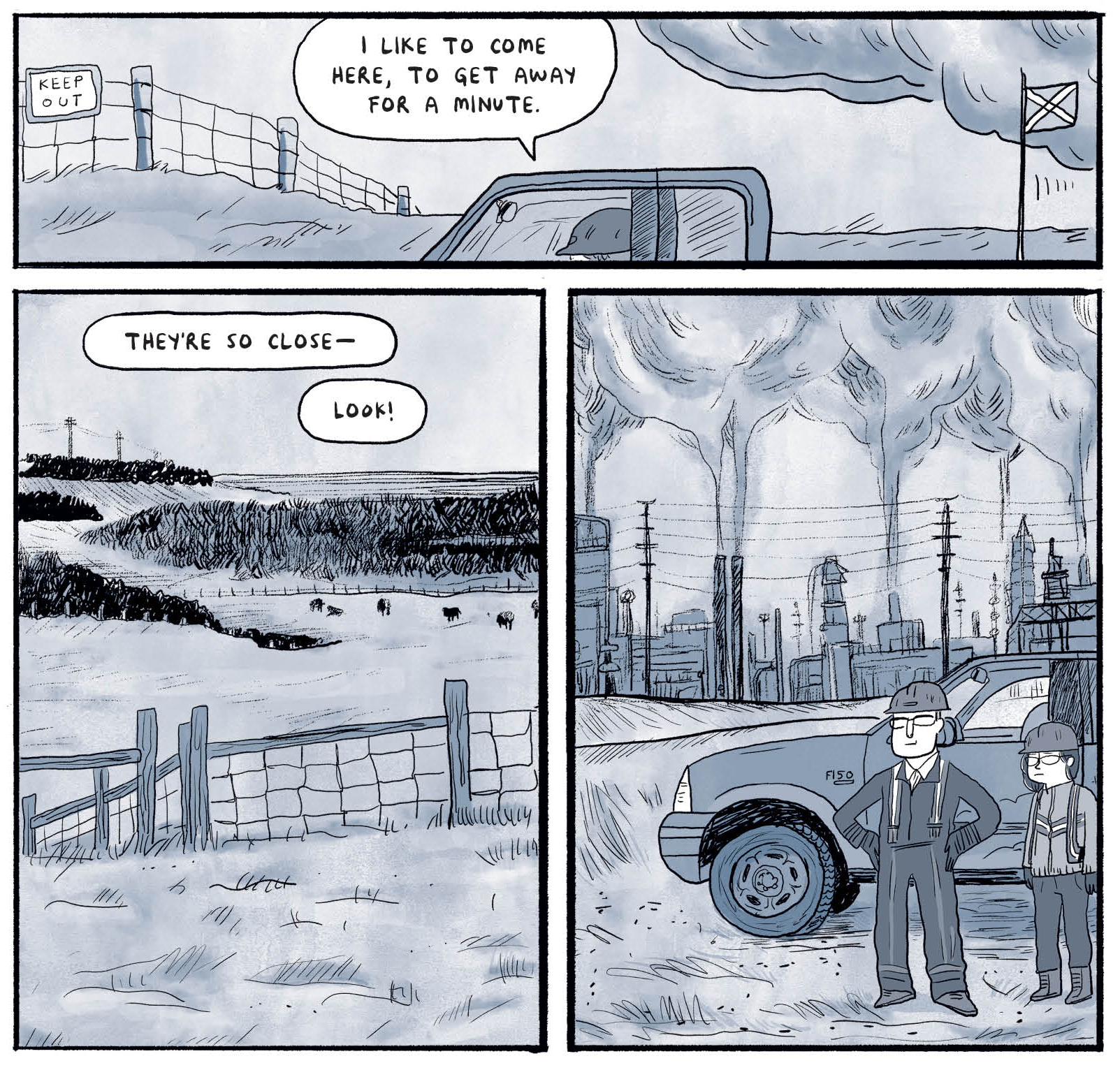
Q. The buffalo in the reclaimed pasture?
A. At Syncrude, they make a big deal over reclaiming old open-pit zones into pasture land. If you look up videos, there’s like a man in a hard hat with his hand going through the grass and he’s like, “The buffalo are happy here.” And so when you’re driving up at Syncrude, you could see the fenced-off area for the buffalo, but Syncrude is right there like pumping shit into the air beside them, because it’s right next to the base mine. And so the buffalo are just like, “Hi. This isn’t really my natural habitat.”
